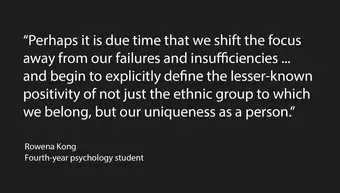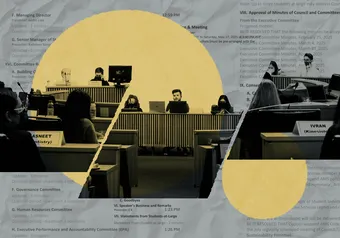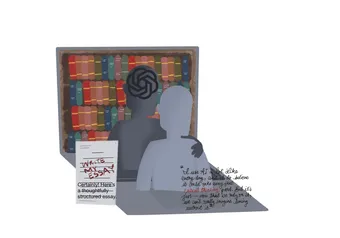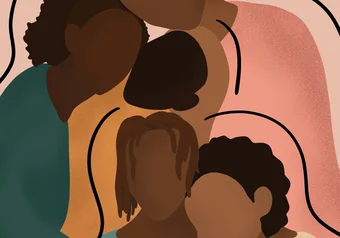Last month, an article which highlighted Dr. Gurdeep Pahar's stance on racism and his TEDx talk raised observable issues of ethnic group favouritism both on campus and in the community. There is finally a voice from the faculty which echoes my personal sentiments concerning the issue that our campus is not entirely free from implicit racial bias.
There is no denying that the everyday campus scene of students mingling with those of their own racial groups is inescapable from one's eye. Beyond campus grounds, such an observation is even more inevitably common. Yet, this tendency of any racial group has been going on for as long as one can remember. Is this natural or the forgivable norm in multicultural Vancouver? There appears to be no clear-cut answer unless we turn to research literature. Seemingly, we the students are speaking different languages when it comes to inside the lecture hall and taking a walk out in the open in the company of someone you feel inherently comfortable with.
Although we are way past the times of overt racism, there is still a reason to wonder why implicit racial bias still survives until this day, especially when multiculturalism has become one of our nation's sources of pride. Of course, cultures can never be banned — they will keep on evolving. But let us not put the whole blame on culture itself. Our group differences are not solely cultural or social, but they reflect our biological makeup as well.
Children themselves can begin to tell races apart as early as three years of age. If we were to make light of and ignore this developmental milestone that helps define a part of our biological and cultural identity, it is a way of saying that racial diversity is not worth celebrating. It occurs to me that there are both positive and negative flipsides of racism.
The human tendency of negativity bias is to overemphasize the worst and be modest with the good. We shine the spotlight on hate crimes in the news, but undervalue the feat of those who braved miles of journey away from home to attend to the needs of orphaned and impoverished children in third-world countries who share neither the same colour nor language with us. Now that is something exemplary and way off the borders of our comfort zone. So there is apparently a reason to pat yourselves on the back, Canadians! Religious mission teams and international community service learning programs are notable initiatives which made a difference in the lives of many abroad but that not all are fully aware of such accomplishments in the local scene.
Altruistic achievements aside, there is just something of a racial instinct within us that seems to lend support to essentialism — a belief that there is an invisible essence that distinguishes one group, take people or animals for example, from another. In an effort to determine critical periods in children during which their implicit racial bias can be influenced by interventions, Antoyna M. Gonzalez et al. found that exposing children with a mean age of 10 years to positive character descriptions of Black individuals was able to reduce their Implicit Association Test scores — a computer-based test which measures the strength of one's implicit racial bias.
However, this brings up yet another question — to what extent do we perceive implicit racial bias as requiring intervention as a treatment deemed necessary for a disorder? Does implicit racial bias contribute in a significant way to any form of social ill — at least in Canada — or is it still better to get rid of this inconvenience so that society can progress more smoothly without hurdles? Perhaps it is due time that we shift the focus away from our failures and insufficiencies — having dwelt on the implicitly negative — and begin to explicitly define the lesser-known positivity of not just the ethnic group to which we belong, but our individual uniqueness as a person. It takes individual stereotyping to kill group stereotyping. Gonzalez et al. also reported that exposing older children to vignettes of counter-stereotypical Black individual exemplars and pointing out their positive qualities helped reduced their implicit racial bias.
As Nalini Ambady et al. discovered in their study, Asian-American children performed better in math tests when their ethnic stereotype was activated, which suggests that even stereotyping can be put to good use when it brings about a positive association with our identity and academic motivation.
Stereotyping, like immunity, can be a form of self-defence with evolutionarily adaptive value that may have been beneficial in the days when the earth's human population was still small and our ancestors needed this quick recognition mechanism to identify similar group members during unanticipated encounters in order to be assured that they did not need to compete and wage war for resources and territories. Instead, they could cooperate safely and confidently with these identifiable members to preserve their own distinct racial characteristics and pass down such genes successfully to future generations.
Otherwise, we would not be who we are today, endowed with our unique genotypes that are handed down through the generations and based on our distinct racial makeup. So think twice — if possible — about the costs and benefits if an acquaintance happens to ask you someday about the potential benefits of the Implicit Association Test.
Rowena Kong is a fourth-year psychology student at UBC.
First online
Share this article







